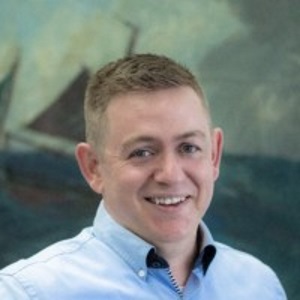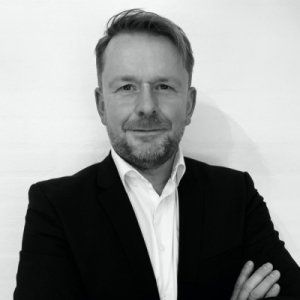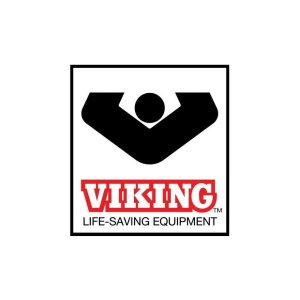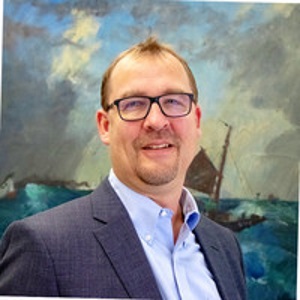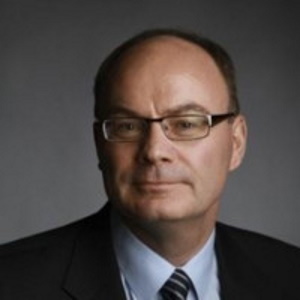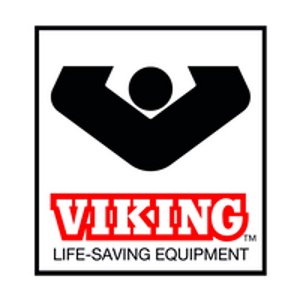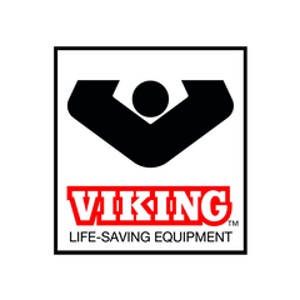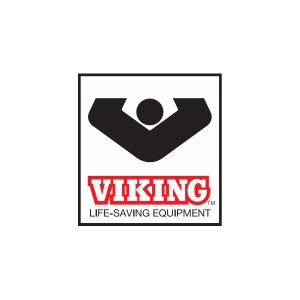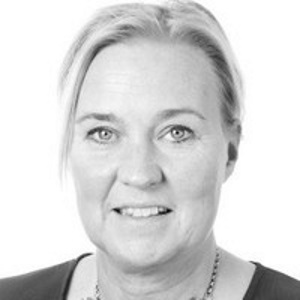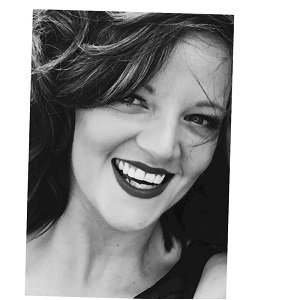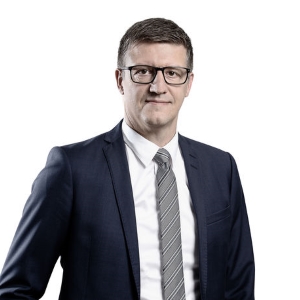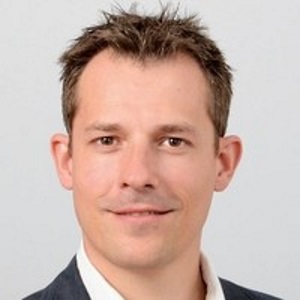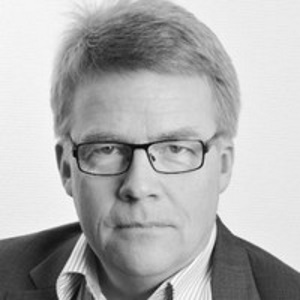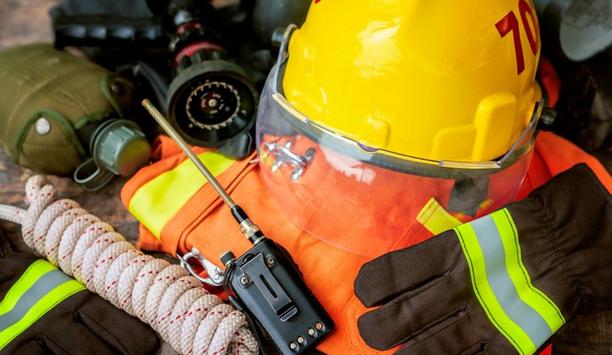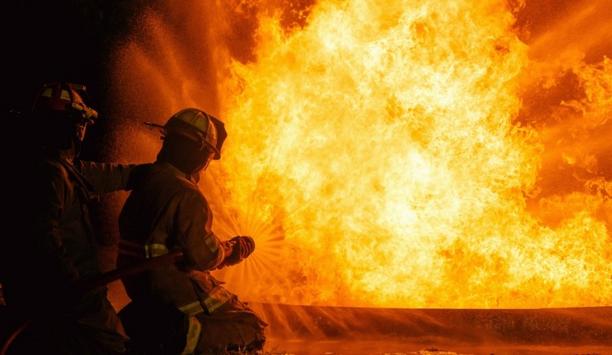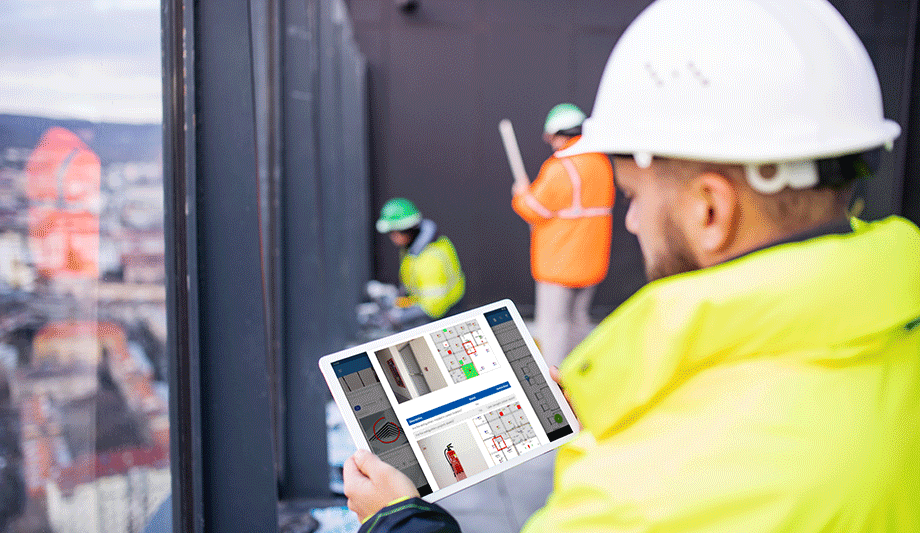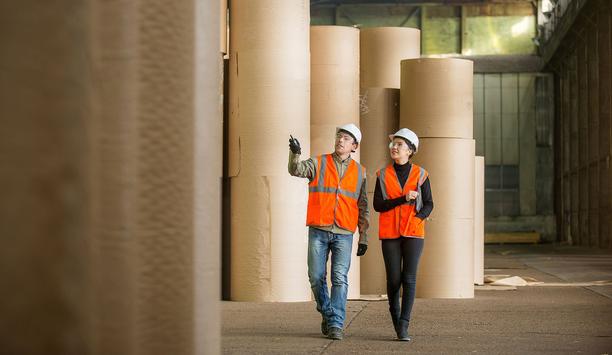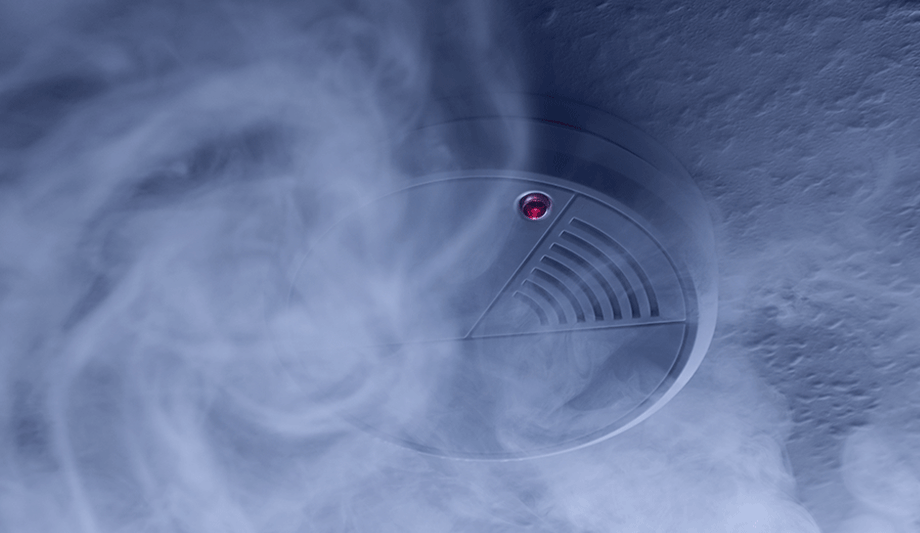VIKING Life - Saving Equipment A / S - Experts & Thought Leaders
Latest VIKING Life - Saving Equipment A / S news & announcements
For shipowners across the globe, safety is first. But in a world where one must maximize efficiency - even when it comes to safety - many successful operators are turning to trust safety management with a single expert partner. When they look at maritime safety, what do they see? Liferafts, lifeboats, immersion suits, and firefighting systems? Service and training? Compliance with rules and regulations? It can be complex for sure, but it doesn’t have to be! Maritime firefighting equipment The primary focus of all suppliers was to offer the products and solutions that customers needed For many years, the primary focus of all suppliers was to offer the products and solutions that customers needed. That goes for the maritime safety equipment business, too. Suppliers sold - and customers bought. And that was fine. One supplier would sell and service the liferafts, personal protective gear would be sourced from various vendors, and firefighting equipment would be serviced by a third company. And so on. For operators able and willing to assign the required resources and absorb the related administration, complexities, and risk involved, such processes are no issue. But surely, there’s a better way to manage safety. What if safety was the product itself – nothing more, and nothing less? Latest addition to Shipowner Agreement VIKING started addressing this over 10 years and is now broadly promoting the latest addition to its Shipowner Agreement. Called Safety Management, the new top-tier option under the concept caters to those who see the large benefits to be gained from having a single global expert streamline and simplify all aspects of safety compliance – freeing up resources to boost the core business. On the product side, Safety Management ads dynamic and digital service optimization on top of the premium safety products, proactive planning, and expert service execution at fixed prices that have already seen agreements signed up for thousands of vessels - at a 98% contract renewal rate. No one-size-fits-all Many operators start out with just one or two safety equipment types under agreement and sign up Of course, Safety Management is not a perfect fit for every operator. Depending on several factors, such as sailing patterns, flag state, fleet size, composition, and more, some shipowners remain best suited with one of the many other options under the Shipowner Agreement concept. Many operators start out with just one or two safety equipment types under agreement and sign up for more as the benefits are established. In fact, 70% of owners expand their agreement within the first year – and this trend goes for both smaller fleets and for major global container carriers alike. Everything included-with OEM quality and competence Following recent acquisitions of marine fire service major Drew Marine FSR and renowned lifeboat and davit supplier Norsafe, the product and servicing setup available under the Shipowner Agreement umbrella has never been greater. Spanning everything from premium lifesaving equipment, to globally uniform servicing with OEM competence and state-of-the-art VIKING Safety Academy training, customers can enjoy convenient access to the full-circle value chain that goes into ensuring 360° asset and crew safety at full compliance – from one supplier, globally.
As the potential last line of defense in critical situations at sea, personal protective equipment must be maintained to the highest of standards, with any damage recorded and flagged for repair. RFID track-and-trace technology is a game-changing PPE condition and service solution. Before leaving the manufacturing plant, all VIKING PPE is fitted with a durable radio-frequency identification (RFID) device that allows for monitoring of its servicing status. Incoming and outgoing goods Staff members register incoming and outgoing goods by scanning the RFID chips At service stations, staff members register incoming and outgoing goods by scanning the RFID chips, helping them to keep track of equipment rented out to customers. “If any damage is identified during the servicing process, the suit or lifejacket is sent to a workstation for testing and repairs,” says VIKING operations manager Raymond Kennedy. Different types of PPE Kennedy added: “We track which parts are used in repairing a suit by scanning a barcode. This gives us full traceability of the batches and components needed and eliminates the risk of typing errors.” “Even tiny tears in the fabric of a suit can drastically affect its performance, so we test our products thoroughly, using different methods for different types of PPE.” Inspections and testing Additionally, the system allows products to be linked with each other digitally Once inspections and testing are complete, the system accurately records any repairs that may be required, he adds. “We track which parts are used in repairing a suit by scanning a barcode. This gives us full traceability of the batches and components needed and eliminates the risk of typing errors.” Additionally, the system allows products to be linked with each other digitally. If a customer is using a personal locator beacon together with a lifejacket, for instance, the system can help them to set the items up and connect them to each other so that they know exactly which equipment goes where. Data makes a difference While the RFID system tells VIKING where its PPE is, where it should be going, and what condition it is in, it also offers longer-term benefits. “By collecting information from the chips, we can pinpoint weak spots in our manufacturing and servicing procedures to improve our products continuously. If our data shows repeated issues with a cuff or a collar, for example, we can target those parts for improvement.” This approach is part of VIKING’s commitment to providing high-quality PPE that can be relied upon to save lives. “We take great pride in the equipment that we manufacture and service. Our suits and lifejackets are often the last means of survival in emergencies, so it is crucial that they function faultlessly every time." Technology and sustainability make a good business case VIKING recently won a three-year contract to supply PPE to Serica Energy Following a competitive tender process, VIKING recently won a three-year contract to supply PPE to Serica Energy, one of the UK’s pioneering oil and gas companies. The deal with the United Kingdom-based offshore energy major is the second of its kind for VIKING in consecutive years. VIKING will work with Babcock Offshore to deliver aviation suits for Serica crew in the British sector of the North Sea. The contract marks VIKING’s second major success in the offshore aviation segment in as many years, following on from last year’s agreement with CNOOC Petroleum Europe Limited, which also involved Babcock as an aviation provider. VIKING’s ongoing efforts Global Sales Manager, Heather McManus believes there is a direct link between VIKING’s ongoing efforts to enhance its products and services and its impact in this specialized sector. “Our latest aviation suit is one kilogram lighter than its predecessor, for example, and is fitted with a radiofrequency identification device (RFID) equipped to track its condition and detect any possible weak spots.” VIKING’s corporate social responsibility policy “The use of RFIDs also cuts paper consumption significantly, improving operational efficiency while also benefiting the environment in a way that aligns closely with VIKING’s corporate social responsibility policy. Serica Energy is strongly committed to minimising its environmental impact, a commitment demonstrated in the fact that these suits feature reusable Velcro® straps instead of plastic packaging,” she adds. “Those working at sea are perhaps more conscious than anyone of the impact our throwaway culture has on the oceans. Cutting out single-use plastics isn’t just the right thing to do; it’s what our customers want to see.”
Established in Hamburg in 1886, Dr. Sthamer is well-known across the marine industry for its high-quality concentrates, which meet requirements under IMO1312 for Deck Foam Systems and IMO670 for High Expansion Inside Air Foam systems for Engine Rooms and Machinery spaces. A strong investor in R&D, Dr. Sthamer’s environmentally responsible products also include next-generation high stability 1% Fluorine Free Foams. New Global Partnership Agreement Foams will be offered under a five-year warranty, subject to verification of storage conditions The new Global Partnership Agreement covers worldwide distribution of multiple Dr. Sthamer marine foam products, with inventories held at VIKING distribution hubs in Dubai, Houston, Odense, Rotterdam, and Singapore. VIKING is also offering a total package of support services, including tank cleaning, disposal and refilling, periodic inspection, and sampling. Foams will be offered under a five-year warranty, subject to verification of storage conditions. An estimated 50% of vessels in service use foam-based marine firefighting systems, including the deck foam systems used on product tankers, chemical tankers, gas carriers and FPSOs, and the engine room protection arrangements used on newer ships. Fully tested for quality VIKING Life-Saving Equipment Global Director of Marine Fire Service, William Gielen, says the agreement builds on previous arrangements between Dr. Sthamer and Drew Marine FSR, with new impetus added by VIKING commitments to grow service capability and invest in its own foam testing facilities in Odense which you can read more about later in this magazine. “Dr. Sthamer is renowned in the marine market for innovation and for the close attention, it pays to the different foam requirements of different ship types. In the marine market, quality and product stability are essential, but giving the customer what they need also demands flexibility in product development." “We like to say that the customer’s marine fire safety is safe with VIKING. Building on two strong marine brands and our combined product and service expertise, MFS also becomes a key part of VIKING’s ‘one-stop-shop’ marine safety offer.” One-stop-shop for maritime safety Foam supplies and related services will now also be offered within the VIKING Ship Owner Agreements Foam supplies and related services will now also be offered within the VIKING Ship Owner Agreements, devised to take care of all of a customer’s safety equipment and service needs across the fleet for a fixed period. “Ship- and asset owners can expect the same high quality on marine fire safety that led them to choose VIKING for their liferafts, lifeboats, immersion suits, and other safety equipment, delivered quickly and without fuss at an affordable cost,” says William. “For marine fire equipment safety, ship- and asset owners can expect the same high quality and efficiency that led them to choose VIKING for their liferafts, lifeboats, immersion suits and other safety equipment,” William Gielen, Global Service Director MFS. Marine-specific experience The consolidated MFS business draws on a commitment for growth, but also marine-specific experience and expertise covering product specifications, transport, storage, fill and certification that some less focused suppliers can no longer claim. “Marine foams is a core business for Dr. Sthamer, while safety is VIKING’s business. Helping ship owners make the right decision on foam selection and giving them the technical support to maintain these critical products in optimum condition protects lives at sea,” says Belarmino Dubois, VIKING Global Service Manager for Drydocking and Foam. Critical expertise VIKING is offering a prepaid, express sampling service under its new foam analysis program The condition of foam stored on board ship is therefore a crucial part of marine fire safety, adds Dubois. “Customers need technical support to ensure that their storage tanks remain fit for purpose, especially where older ships are concerned,” he says. “That demands technical expertise, but also a close working relationship with the owner and those on-board ships, with all parties working together to secure the necessary approvals." Dr. Sthamer is providing technical training for VIKING MFS ‘ambassadors’, who will offer full product and service support on the characteristics, performance, condition, and storage requirements for branded marine foams. In turn, VIKING is offering a prepaid, express sampling service under its new foam analysis program. VIKING marine fire safety business Jan Knappert, International Sales Director, Dr. Sthamer, comments: “The VIKING marine fire safety business has clarity of purpose and is investing in its people and in strategically-located inventories." "Now, when a customer inquires about marine foam availability, it’s not a question of coordinating delivery with a future vessel call; I can just say ‘Contact VIKING, they have it in stock’.”
Insights & Opinions from thought leaders at VIKING Life - Saving Equipment A / S
Trends in garments and protective gear for firefighters are evolving to address the changing needs of the fire service. Garments worn by firefighters must be comfortable and allow an adequate range of motion. They must protect first responders from hazards such as heat and exposure to blood-borne pathogens. Fire service clothing must be durable to withstand long-term usage in hostile environments. “It’s personal for everyone in the industry,” says Oliver Spoecker, Director, Workwear & Protective Wear and Global Commercial Director for Lenzing. “Firefighters have to be kept safe by the best all-around protective fabrics.” He says fibers must be comfortable, breathable and safe.” Fire-Resistant qualities Flame resistance is a fundamental property for fibers in the fire service. Lenzing FR (Flame Resistant) Fibers are sustainably produced on three continents by the multi-billion-dollar company. The cellulosic fibers come from wood and then are made inherently flame retardant by introducing a pigment into the carbon matrix that provides fire-resistant qualities. Another concern in the fire service is stress from excess body heat caused by exertion The flame resistance is an integral part of the fiber and therefore cannot be washed out or worn out over time; the fire resistance endures as long as the garment. Another concern in the fire service is stress from excess body heat caused by exertion, and FR fibers are breathable to address the issue. Because the fiber comes from natural substances, there are no dangers of exposure to skin. Fire service market Lenzing fibers are familiar to ex-soldiers who later become firefighters. The uniforms of U.S. soldiers in Iran and Afghanistan contained Lenzing fibers. In fact, the breakthrough in military applications gave the company a push to enter the fire service market in 2007. DuPont produces Nomex Xtreme Performance fibers that provide protection, thermal performance and toughness for firefighters. They contain the heat and flame protection of DuPont Nomex with the lightweight strength of DuPont Kevlar, and the thermal damage tolerance and durability of high-performance materials such as PBO, Nomex Nano, and Nomex Nano Flex. Nomex fibers are incorporated into garments by manufacturers such as Fire-Dex, Globe Manufacturing, Lion, Veridian, and Viking. Comfort and flexibility are guiding the development of newer garments. Lighter-Weight jackets A triple-certified garment addresses the budget restraints of many departments For example, 5.11 Tactical has introduced lighter-weight jackets, outerwear, and a duty uniform that combine an ‘old-school’ aesthetic with better comfort and a better range of motion. Flexible fabrics, including a polyester-cotton blend, and adjusted fit are elements in the new line. Viking has introduced the new Viking Shield clothing line that meets the requirements of three different applications: technical rescue and extrication (NFPA 1951), emergency medical services (NFPA 1999), and wildland firefighting (NFPA 1977). A triple-certified garment addresses the budget restraints of many departments. The approach is cost-effective and cost-efficient, says Grant Grinstead, Viking’s Fire Segment Sales Manager for North America. Providing structural protection A surprising element is how lightweight the garment is. “A lot of firefighters are shocked because they didn’t know there was a product like this,” says Grinstead. “The big thing is the light weight and the feel of it, and it is made in tailored sizes.” Viking has provided structural protection (turnout gear) to firefighters for two decades. Introduction of the new Shield product can help reserve a company’s turnout gear for the 30 to 40% of calls that require it. For the other 60 to 70% of calls, the new multi-use, lightweight garments can provide more comfort for firefighters.
The New Future For Fire Agencies
DownloadThe Eight Key Trends in Fire Detection in 2023
DownloadA Digital Platform to Improve Fire Safety Compliance and Inspections
DownloadOvercoming the Challenges of Fire Safety in the Paper Industry
DownloadCarbon Monoxide: Creeping Killer Caught In The Act
DownloadVIKING VK466 residential pendent sprinkler
VIKING VK472 residential pendent sprinkler
VIKING VK458 residential pendent sprinkler
